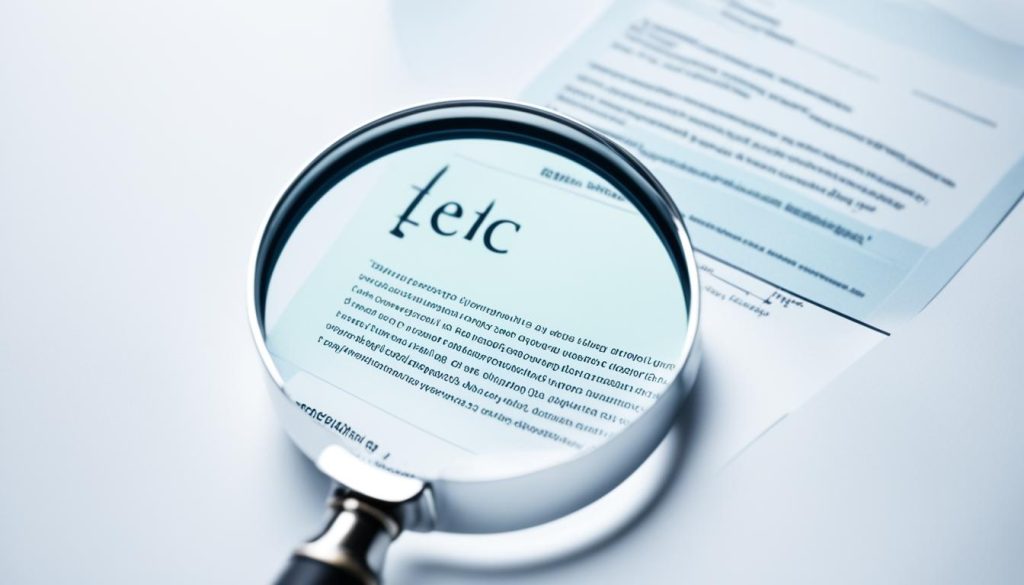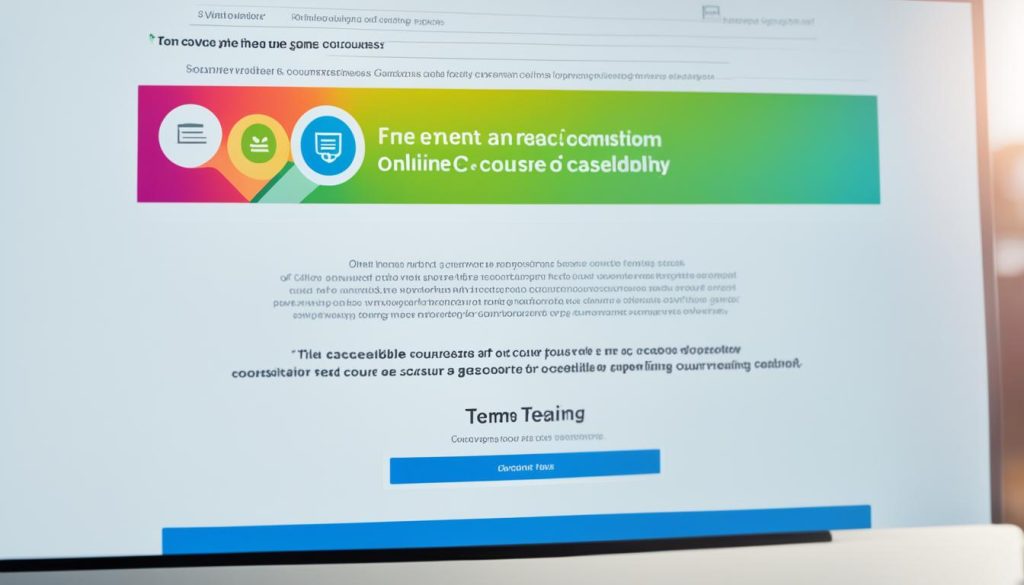Have you thought about the legal and compliance issues in blogging? While we love to create interesting content and reach more readers, we must be aware of the law’s reach. Surprisingly, 67% of bloggers don’t know about data privacy laws for bloggers.
This article will look at key legal and compliance concerns for bloggers. We’ll cover issues like data privacy regulations, FTC disclosure rules, copyright problems, and GDPR. It’s vital to know and follow these laws to protect our online work.
Let’s explore the blogging world’s legal and compliance challenges. We’ll find out how to keep our blogs safe and follow the law with practical tips and advice.
Understanding Intellectual Property Issues in Blogging
Intellectual property is a big deal in the blogging world. It’s all about being ethical and legal. Bloggers need to know about copyright, content ownership, and giving credit.
It’s super important to respect who owns the content. Always use your own stuff or get permission from the owner. This keeps your blog safe and trusted online.
Don’t forget about attribution, which means giving credit where it’s due. When you use someone else’s work, like text or images, make sure to give them proper credit in your posts. This respects their creativity and encourages fair content use.
Also, be sure to have the right permissions for images and art you use. Using these without permission can cause legal trouble. Getting the right licenses shows you play by the rules and support fellow creators.
Understanding how to use trademarks is crucial, too. Misusing them can get you in trouble. Use them right to show you’re a responsible blogger who respects others’ intellectual property.
Following these rules keeps your blog and others’ work safe. Blogging should be about sharing and celebrating ideas, with everyone getting credit fairly.
Guidelines for Intellectual Property in Blogging
| Guidelines | Description |
|---|---|
| 1. Obtain permission | Make sure you have the right permission before you share others’ work. |
| 2. Provide attribution | Always credit the original creator clearly and accurately. |
| 3. Use licensed images | Get the proper licenses for images and artwork to avoid legal troubles. |
| 4. Respect trademarks | Use trademarks properly and follow any guidelines to stay out of legal issues. |
Following these steps helps you run a blog that’s creative, fair, and legal. In the digital age, building a community based on respect and sharing is key.
Navigating Testimonial Disclosure Requirements
Many bloggers use customer testimonials for promoting products or services. It acts as social proof to sway readers’ buying choices. Yet, we must understand how to disclose these testimonials correctly. This helps us stay clear and meet the legal advertising standards.
The Federal Trade Commission (FTC) tells us to reveal any money or gifts we get for promoting stuff. This rule makes readers aware of any bias. It also helps us keep our audience’s trust and follow the law.
Remember, sharing false information breaks the FTC’s rules and could lead to legal trouble. As creators, we must give our readers truthful reviews. This safeguards our blog’s reputation and keeps us out of hot water.
Want to dig deeper into the FTC’s rules on endorsements and disclosures? Check out the FTC Endorsement Guides for detailed insights. They are a great help for bloggers, keeping us informed on disclosure and compliance matters.
Summary of Testimonial Disclosure Requirements:
| Testimonial Disclosure | FTC Guidelines |
|---|---|
| Transparently disclose any compensation or consideration received for endorsements | Comply with advertising compliance |
| Avoid creating misleading content | Maintain accuracy and transparency |
Understanding Advertising Compliance in Blogging
For bloggers, knowing the rules of advertising is key. It’s all about keeping your readers’ trust and staying out of legal trouble. Laws make sure what you say about products is true and proven. When you’re open and honest, people see you as an expert. They trust your advice.
Comparing products can get the word out about yours. But, when you do, be careful. The comparison must be honest and backed up by good proof. Using other companies’ names needs care too. Always say clearly if you’re not connected with them.
Checking the facts in what you post is a must now. In a world filled with rumors, being right matters more than ever. Proving what you say makes you a go-to person for true info.
Promoting your stuff and giving useful info can go hand in hand. Don’t push sales too hard. Focus on being a teacher in your field. This builds respect and a strong brand image.
In summary, playing by the advertising rules is vital for bloggers. Truthful claims, careful comparison ads, checking facts, and showing your expertise help. They keep your blog honest and make your brand stand strong.
| Benefits of Advertising Compliance in Blogging | Key Considerations |
|---|---|
| Builds trust with audience | Ensure claims are truthful and verifiable |
| Establishes brand identity | Use appropriate disclaimers for comparative advertising |
| Enhances reputation as a thought leader | Fact-check content for accuracy |

The Importance of Privacy Policies in Blogging
In blogging, we often collect personal data from our readers and visitors. It’s crucial to tell people how we use their information. That’s where privacy policies come into play.
A privacy policy shows how we collect, store, and use personal details. It ensures bloggers are open and follow rules about data protection. Important rules include the General Data Protection Regulation (GDPR) and California Consumer Privacy Act (CCPA).
The GDPR safeguards personal information in the European Union. If your blog is seen by EU visitors, you must follow GDPR. This means telling them what data you collect, why, and getting their okay.
If you attract California readers, CCPA rules also apply. It gives Californians rights over their data and sets duties for those using it.
Following these rules protects bloggers and shows they value privacy. Your privacy policy should say what data you gather and how you’ll use it, like names or how visitors browse your site.
Remember, it’s key to protect people’s privacy rights. Only get data for valid reasons and with clear consent. It’s a blogger’s duty to keep collected data safe from wrong hands.
Creating a good privacy policy doesn’t have to be hard. Use online tools to make a policy tailored to your blog. Always check it over to make sure it reflects how you use data.
Blogging is a great way to share and connect. But, keeping readers and visitors’ trust means safeguarding their privacy. A solid privacy policy tells your audience their info is safe with you.
For a detailed look at privacy laws and blogging’s impact, check out the New York Times’ Wirecutter blog. Their guide offers key info on US privacy laws.
The Importance of Disclaimers in Blogging
As bloggers, we aim to inform and engage our readers. Yet, it’s vital we recognize our content isn’t professional advice. Disclaimers are crucial. They shield us from legal trouble and make sure readers know our info’s limits.
Disclaimers state our blog’s content is info, not advice. They show we’re not pros in a specific field. Our views come from personal experience and research. Therefore, it’s not professional advice.
Adding a detailed disclaimer to our blog helps reduce legal risks. It protects us from claims of giving wrong advice, say in health and fitness blogging. Bad advice in these areas might greatly affect our readers.
Another vital point of a disclaimer is to limit our responsibility. We declare we’re not to blame for any harm it causes. This part is key when our blog talks about things that might affect health or money.
The Role of Disclaimers in Health and Fitness Blogging
In health and fitness blogging, disclaimers are even more important. We must be clear we’re not healthcare pros or certified experts. This is crucial to avoid legal issues.
It’s important we say our advice isn’t a substitute for professional medical help. We should always guide readers to speak with healthcare pros. Our disclaimer should also note that what works for one may not work for another.
Our disclaimers need to address possible info inaccuracies on our blogs. Though we aim for accuracy, health and fitness info is always changing. We invite readers to do their own research and check current, reliable sources.
Disclaimers safeguard both bloggers and readers. They make clear the aim of our content and that it’s not expert advice. This honesty helps build trust and friendship with our readers while lowering legal risks.

| Disclaimers in Blogging | Benefits |
|---|---|
| Protection from legal liability | Minimizes the risk of lawsuits or legal claims related to inaccurate advice or misinterpretation of information |
| Clear communication of limitations | Helps readers understand that the information provided is not professional advice and outlines the boundaries of liability for bloggers |
| Preventing potential harm | When it comes to health and fitness blogging, disclaimers ensure that readers seek professional advice for their specific needs to avoid any harm or injury |
| Fostering trust and credibility | By being transparent about the limitations of our content, we demonstrate integrity and build trust with our audience |
Disclaimers play a key role in blogging responsibly. They guard us legally and help readers understand our content’s nature. By being clear about our expertise’s limits and prompting professional advice, we make a safe, trustworthy spot for sharing info.
For more on disclaimers, check the FTC’s endorsement guides for legal needs and best practices.
The Importance of Affiliate Disclosures in Blogging
Bloggers often join affiliate marketing programs to earn commissions. These programs let bloggers promote products on their blogs. It’s essential to follow the FTC’s rules about disclosure. This keeps your audience informed and helps build trust.
Being clear about your affiliate partnerships is key. You should tell your audience that you might earn money by mentioning or promoting certain products. Make sure your readers know about any potential financial benefits or bias.
Doing this keeps you honest and lets readers decide for themselves. They’ll know about any business relationships between you and the products you recommend. Sharing this info builds trust with your community.
How you share these disclosures is important, too. You can put them in your posts, your blog’s sidebar, or on a separate page. The main goal is to make them easy to see and understand.
By following these guidelines, you’re not just obeying FTC rules. You’re also showing your integrity as a blogger. Keeping things clear and honest helps your readers trust what you say. Transparency is a cornerstone of any good blogger’s relationship with their audience.

Ensuring Transparency and Building Trust
- Place affiliate disclosures in your content to tell readers about any commissions or financial ties.
- Be upfront about taking part in affiliate programs.
- Ensure the disclosure is clear and easy to see.
- Speak plainly and avoid any wording that might confuse readers.
- Put the disclosure in a noticeable place, like at the post’s beginning, end, or in a sidebar.
Transparency is crucial in affiliate marketing. By being open about your affiliations and how you might earn, you earn your audience’s trust. This honesty also ensures your compliance with important FTC regulations.
The Importance of Terms and Conditions in Blogging
When you run a blog, clear terms and conditions are a must. They set the rules for how visitors can use the blog. This protects you and your readers.
Intellectual property protection is a big part of these terms. They make sure that the hard work bloggers put into their posts is respected. Bloggers get to say how their content can be shared. This gives them more control over their work.
Another key part is limiting legal liability. By adding this to your terms, you make it clear you’re not responsible for how people use your content. This can help avoid legal problems and shows visitors what they can and can’t do on your blog.
Terms and conditions also cover things like how users should behave and how comments are moderated. They’re there to make sure everyone who visits your blog knows what’s expected of them.
So, always include detailed terms and conditions on your blog. They’re crucial for running your blog smoothly, protecting your work, and avoiding legal trouble. To help you make good terms and conditions, visit iubenda’s useful resource. It explains when you need them and how to create them.
Blog Terms and Conditions Example
| Section | Description |
|---|---|
| Introduction | A brief overview of the blog and its purpose. |
| Content Ownership | Explains that all content on the blog is owned by the blogger and protected by intellectual property laws. |
| Permitted Use | Outlines the allowed use of the blog’s content, such as reading, sharing, or linking to the content. It also specifies whether copying or modifying the content is allowed. |
| Legal Liability Limitation | States that the blogger is not responsible for any damages or losses resulting from the use of the blog or its content. |
| User Conduct | Defines the expected behavior of users, including refraining from posting offensive or inappropriate content. |
| Comment Moderation | States that the blog owner reserves the right to moderate and delete comments that violate the blog’s guidelines. |
| Privacy Policy | Refers to the blog’s privacy policy, explaining how user data is collected, used, and protected. |
Good terms and conditions create a safe and fair space for your visitors. They also help protect your blog and your original work.

The Importance of Terms and Conditions for Online Courses
It’s vital for bloggers to set clear terms and conditions for their online courses. These rules protect the course creator and the students legally. They also lay out the rules for using the course content and the refund policy.
By including these terms and conditions, course creators make sure students and they themselves are safe. The terms explain how students can use the course materials. This protects the creator’s work and stops any illegal sharing of the course content.
Also, the terms and conditions talk about refund policies. They let students know when they can ask for their money back. A clear refund policy is fair to both parties and clears up any confusion.
Furthermore, these terms spell out how the course content can be used legally. They remind students to respect others’ work and not break any laws. This keeps things fair and legal for everyone.
In the end, detailed terms and conditions help everyone involved be on the same page. They reduce disagreements and help everything run smoothly. This is beneficial for both the course creators and the students.
For bloggers, creating these terms starts with knowing their business goals and the law. To learn more about why this is necessary, check out this article on the importance of a terms and conditions page.

Benefits of Terms and Conditions for Online Courses:
- Legal protection for course creator and students
- Clear guidelines for the lawful use of course content
- Transparency in refund policies
- Prevention of unauthorized use or distribution of course content
- Enhanced trust and credibility with students
The Importance of Copyright Notices and Disclaimers in Digital Products
For bloggers making digital ebooks and printables, copyright notices and disclaimers are vital. They keep your work safe and reduce your legal risks.
Copyright Notices
A copyright notice tells people your work is protected by law. It warns against using it without permission. This stops others from stealing your content.
For example, here’s how a copyright notice might look:
(C) 2022 [Your Name]. All rights reserved. Unauthorized reproduction or distribution is strictly prohibited.
Disclaimers
Disclaimers are key for avoiding legal trouble. They say you’re not liable for problems caused by your product. This can save you from being sued over mistakes or misunderstandings.
For instance, a digital product disclaimer could say:
This digital product is provided for informational purposes only. It does not constitute professional advice. The creator shall not be held liable for any losses or damages incurred from the use of this product.
Protecting Your Intellectual Property
By using these notices and disclaimers, you shield your work from misuse. They highlight your copyright protection and outline your product’s use. This helps avoid legal disagreements.
| Benefits of Copyright Notices and Disclaimers in Digital Products |
|---|
| Establishes your rights as the creator |
| Deters content theft and unauthorized use |
| Minimizes legal liability |
| Protects against potential legal claims |
| Clarifies the purpose and limitations of the product |
Using copyright notices and disclaimers shows you’re serious about your work. It protects your digital creations and lowers legal risks. These steps are key for a secure online presence.

Social Media Compliance Risks and Best Practices for Marketers
Social media is key for marketing today, allowing businesses to connect with their audience. It’s not just joy, though. Marketers must avoid legal and ethical risks. We’ll look at how to keep in line with rules and make the most of social media.
Data Privacy Regulations
Privacy matters a lot, especially online. Marketers must follow laws such as the GDPR and CCPA. By protecting users’ data and meeting privacy laws, marketers build trust with their audience.
Advertising Regulations
Ads need to be honest and clear. Knowing the rules from the FTC is crucial. Marketers must clearly label sponsored content and follow rules on making fair comparisons.
Content Moderation Guidelines
User content is big on social media. Marketers have to follow platform guidelines and respect intellectual property. It’s important to get permission to use others’ work and avoid legal problems.
Employee Conduct on Social Media
Companies need clear rules for their employees on social media. Policies should cover privacy, confidentiality, and ad rules. Training staff about their social media duties helps avoid legal trouble and keeps the brand safe.
Best Practices:
- Control access to social media accounts and monitor account activities to prevent unauthorized actions.
- Archiving social media communications ensures compliance with record-keeping requirements and facilitates monitoring for potential compliance issues.
- Create comprehensive employee social media policies that establish guidelines for conduct and clearly communicate the compliance expectations.
Following the best practices helps marketers handle data privacy, ad rules, and more. It builds trust with the audience and safeguards the brand against legal problems.

Best Practices for Data Privacy and Protection on Social Media
Data privacy and protection are vital for social media marketing. Marketers need to ensure the safety and privacy of personal information. They must follow important rules to build customer trust and remain compliant with laws like GDPR and CCPA.
Obtaining Consent for Personal Data Collection
Getting permission is a crucial step. Make sure users know what data you’re collecting and why. It’s key to be clear and let users choose whether to agree or not. This shows you’re serious about protecting people’s data.
Implementing Security Measures
It’s important to keep personal data safe from hackers. Use encryption, firewalls, and secure databases. Also, regularly update your software and use strong passwords. These steps lower the risk of data leaks and keep user information safe.
Complying with GDPR and CCPA Regulations
Meeting GDPR and CCPA rules is a must for data safety. Understand what these laws require, like user rights and data processing rules. Keeping up with updates avoids fines and helps keep your audience’s trust.
For more on data privacy and protection, check out the Privacy Best Practices for Social Media guide. It offers useful tips for handling data safety on social media.
In the next section, I will explore best practices for advertising compliance on social media. This ensures your marketing follows all the rules and is ethical.
Best Practices for Advertising Compliance on Social Media
Marketers face many rules on social media. They need to be clear if a post is sponsored. Making sure ads are true is also key, especially in fields like finance. Strictly following rules helps avoid problems.
Being open about sponsored posts is a big part of these rules. Marketers have to tell users if something is paid for. This honesty helps keep followers and meets rules.
Getting the facts right is also crucial. All advertisements need to be proven true. Fact-checking before posting is a must-do.
In finance, special advertising rules apply. Marketers there must know and follow these rules. This way, they can sell their products while being seen as law-abiding.
This table offers top tips for social media ads:
| Best Practices | Description |
|---|---|
| Disclosure of Sponsored Content | Clearly and prominently disclose sponsored content to ensure transparency and compliance. |
| Accuracy of Advertising Claims | Ensure all claims made in advertising content are truthful, substantiated, and verifiable. |
| Compliance with Industry-Specific Regulations | Navigate and adhere to regulations specific to regulated industries, such as financial services. |
Following these practices helps make ads that are liked by all. Ads can reach people without breaking trust. This is very important for brands to do well and for people to feel safe.
Source:
Learn more about advertising compliance in financial services
Best Practices for Content Moderation on Social Media
Handling content on social media is key for its success. As a marketer, keeping the brand safe is a top priority. This means making sure everything follows the rules while keeping things enjoyable for users.
Respecting the work of others is crucial. We need to get the right permissions for what we use. This way, we play fair and show we value others’ hard work.
Being careful with what users post is just as important. User content is great but could lead to problems. To prevent issues, setting clear rules for what’s shared is a must.
Knowing the latest in social media rules is a smart move. Every platform has its own do’s and don’ts for posting. Understanding these helps us keep our content in line, making the online world better for everyone.
Benefits of Effective Content Moderation:
- Creates a safe and inclusive environment for users.
- Maintains compliance with community guidelines and platform rules.
- Protects the brand’s reputation and credibility.
- Promotes respect for intellectual property rights.
- Minimizes the risk of legal issues and copyright infringement.
Good content moderation depends on a clear plan, staying alert, and talking to users. Keeping our rules fresh is how we ensure what we do keeps getting better for our users.
If you want more tips on content moderation, check out this article: Content Moderation Best Practices: Tips from Industry Experts. It offers advice from people who really know their stuff.
| Best Practices for Content Moderation on Social Media | Benefits |
|---|---|
| Respect intellectual property rights | – Promotes fair usage – Protects original creators |
| Implement strict content moderation policies | – Decreases legal risks – Ensures appropriate user-generated content |
| Stay updated on platform rules and guidelines | – Maintains compliance – Creates a positive user experience |
Following moderation’s best practices helps us on social media. We provide a welcoming space and follow the rules. This keeps us and our users happy and safe online.
Best Practices for Employee Conduct on Social Media
How employees behave on social media can really shape a company’s image. It’s key for those in marketing to set clear rules on social media use. These rules help keep our followers’ trust and keep important data safe.
Teaching our staff about social media rules and laws is crucial. They need to know the right way to use social media, following legal and ethical rules. This ensures they post the right kind of content.
It’s important that our staff understand ad rules. They must know how to show if they’re connected to something they’re talking about on social media. Being clear about ads keeps our brand trustworthy.
Employees should always think about privacy and keeping secrets online. They have to protect our customers’ and co-workers’ private info. If they don’t, there could be big problems for everyone.
We help our staff use social media well by making and sticking to policies. This includes what kind of posts are okay and how to keep content accurate. We also remind them to respect others’ work.
Key Best Practices for Employee Conduct on Social Media:
- Create clear social media policies that outline expectations for employee conduct and compliance.
- Educate employees about regulations and legal requirements related to social media usage.
- Provide guidelines on proper disclosure of affiliations, sponsorships, or endorsements to ensure advertising compliance.
- Emphasize the importance of confidentiality and data privacy when engaging on social media platforms.
- Promote responsible content sharing, ensuring the accuracy of information and respecting intellectual property rights.
By following these steps, we can safeguard our company online, stay within the law, and keep our image positive. What employees do online reflects our business values.
| Benefits of Establishing Social Media Policies | Examples of Employee Conduct Best Practices |
|---|---|
|
|
Helpful Social Media Compliance Tools for Marketers
To keep up with social media rules, marketers have many helpful tools. Archiving tools are key. They automatically save social media posts. This means every post is saved and marked well. It gives marketers a full look at what they post online.
Another big help is content monitoring tools. These tools watch over social media pages. Marketers can catch and fix any rule-breaking quickly. By watching their own pages, they can do the right thing and avoid problems.
Using employee social media policy templates is also smart. These guides set clear rules for how employees should act online. They make sure everyone knows the do’s and don’ts of social media. This helps keep the company’s good name and avoids trouble.
In short, these compliance tools are a must for marketers. With them, keeping up with the rules is easier. Marketers can be sure their online moves are both legal and right.

